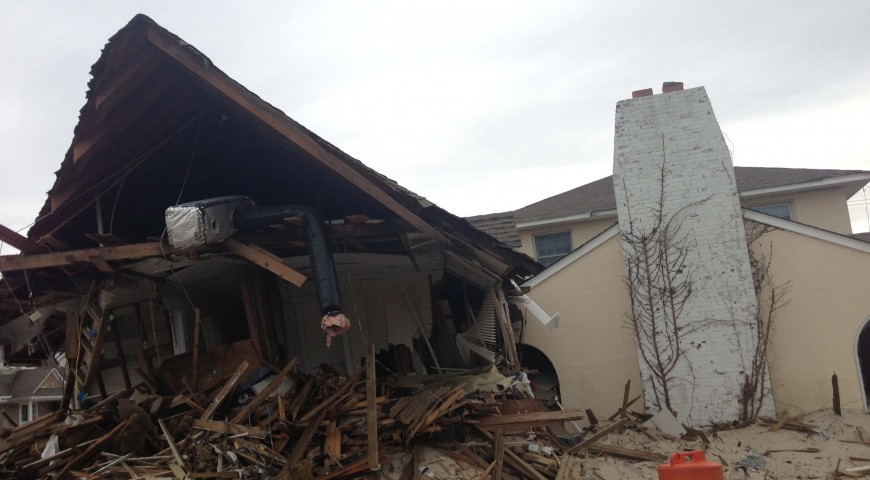When I first got word that I will be deployed to New Jersey to perform Hurricane Sandy initial damage assessment inspections to assist home owners with their Sandy insurance claims, I could not wait to get on that plane. I would be the second team to head up north and take a look at all of the destruction that went on, the pioneer of the E.I. group. Having family up there and knowing how devastating this storm was to everyone up north, made it all the easier to just pick up and go help all those whose lives were altered by Superstorm Sandy. It was a very exciting moment in my career. However, even with all of the intense training and preparation that went on prior to my departure, nothing could have prepared me for what I saw once I stepped foot in Mantoloking, New Jersey.
Being born and raised here in South Florida, hurricanes have always been a part of my life. Having lived through storms like Andrew, Katrina and Wilma, I was pretty much used to the fact of seeing lots of downed trees, eroded beach lines, downed power lines, the occasional roof being blown off of a house, and lots of debris scattered throughout the ground. Never in my wildest dreams did I ever imagine a house being lifted off its foundation, sent floating across streets and ending up crashing, as if they were vehicles on an expressway, into nearby structures. It was as if these houses were toy cars being thrown around and blown to pieces. A sight you have to see to believe.

Rows of houses between Homestead and Florida City, Fla., damaged by Hurricane Andrew
While seeing all this destruction, I started thinking to myself having lived through so many major hurricanes, some of which were category 5, how is it possible that I have never seen so much destruction over such a large area. The answer I came up with was ‘Evolution’, the need to adjust and adapt to your surroundings. People in Florida have been pounded with hurricanes since the beginning of time. Many years of experience and suffering has helped put in place design and construction standards to help protect us from Mother Nature. Starting with the all famous hurricane Andrew (1992), whose winds reached 175 mph and caused approximately $27 billion in damage. After Andrew many standards and codes were adopted to meet the wrath that these hurricanes are possible of coming ashore with.
So here we are in the aftermath of the largest Atlantic hurricane on record (spanning approximately 1,100 miles) and what is expected to be the second most costly Atlantic hurricane (estimated at $50 billion). Evolution is upon us once again; the need to adapt and strengthen our eastern border is a must to prevent another situation such as the one up north. Here at Engineering Express we have already begun that process, starting with our state of the art “Initial Damage Assessment Inspection”.
This is a very exciting and thrilling moment in my career. Being able to provide a helping hand to all those who fell victim to the wrath of Superstorm Sandy is the reason I studied engineering: to provide support and quality designs to the public. Stay tuned as I continue to share with you my path down this long road to recovery from Superstorm Sandy.
Original Article found on Engineering Express


